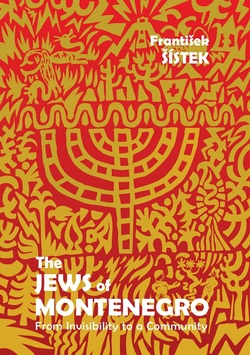The Jews of Montenegro: From Invisibility to a Community
 Year of publication:
2024
Year of publication:
2024
 Publisher:
Faculty of Montenegrin Language and Literature / Institute of History of the Czech Academy of Sciences
Publisher:
Faculty of Montenegrin Language and Literature / Institute of History of the Czech Academy of Sciences
 ISBN:
978-9940-40-090-3
ISBN:
978-9940-40-090-3

The book provides the first overview of Montenegro's previously largely hidden and unknown Jewish history in English. The work first discusses the archaeological evidence and historical sources documenting the earliest traces of Jewish presence on the territory of Montenegro in antiquity and the middle ages. Special attention is dedicated to the enigmatic personality of Sabbatai Zevi, the most famous “false messiah” of modern Jewish history who spent the last years of his life in banishment in the town of Ulcinj on the Montenegrin coast and was buried here in 1676. The following chapters focus on the presence of the Jews in the independent Montenegrin monarchy before 1918, the Jews on the Ottoman territory of the Sandžak of Novi Pazar and the Jewish community of the Bay of Kotor and the Montenegrin Coast under the Habsburg monarchy. After a discussion of Jewish demography, religious organization and destinies of notable personalities of Jewish origin living in Montenegro under royal Yugoslavia in the interwar period, the book provides a detailed analysis of the destiny of the local Jews and Jewish refugees from other parts of Yugoslavia during the Second World War. After the initial Italian fascist occupation (1941-43), Montenegro was occupied by Nazi Germany (1943-44) which quickly extended its anti-Jewish measures and genocidal plans to this corner of Europe. Over a hundred Jews hiding on Montenegrin territory were captured and later perished in Nazi concentration camps as victims of the Holocaust, but several hundred more Jews survived the war in Montenegro thanks to the help of the local people and Yugoslav Partisan forces which also included many Jewish fighters. Under socialist Yugoslavia, as a result of immigration from other parts of the country and intermarriage, the number of Jews in Montenegro was slowly growing, although many believed that Montenegro is the only Yugoslav republic without a Jewish presence. The last two chapters analyze the establishment of the Jewish community after the break-up of Yugoslavia and the recognition of Judaism as the fourth traditional religion of the country in independent Montenegro in the beginning of the 21st century.


